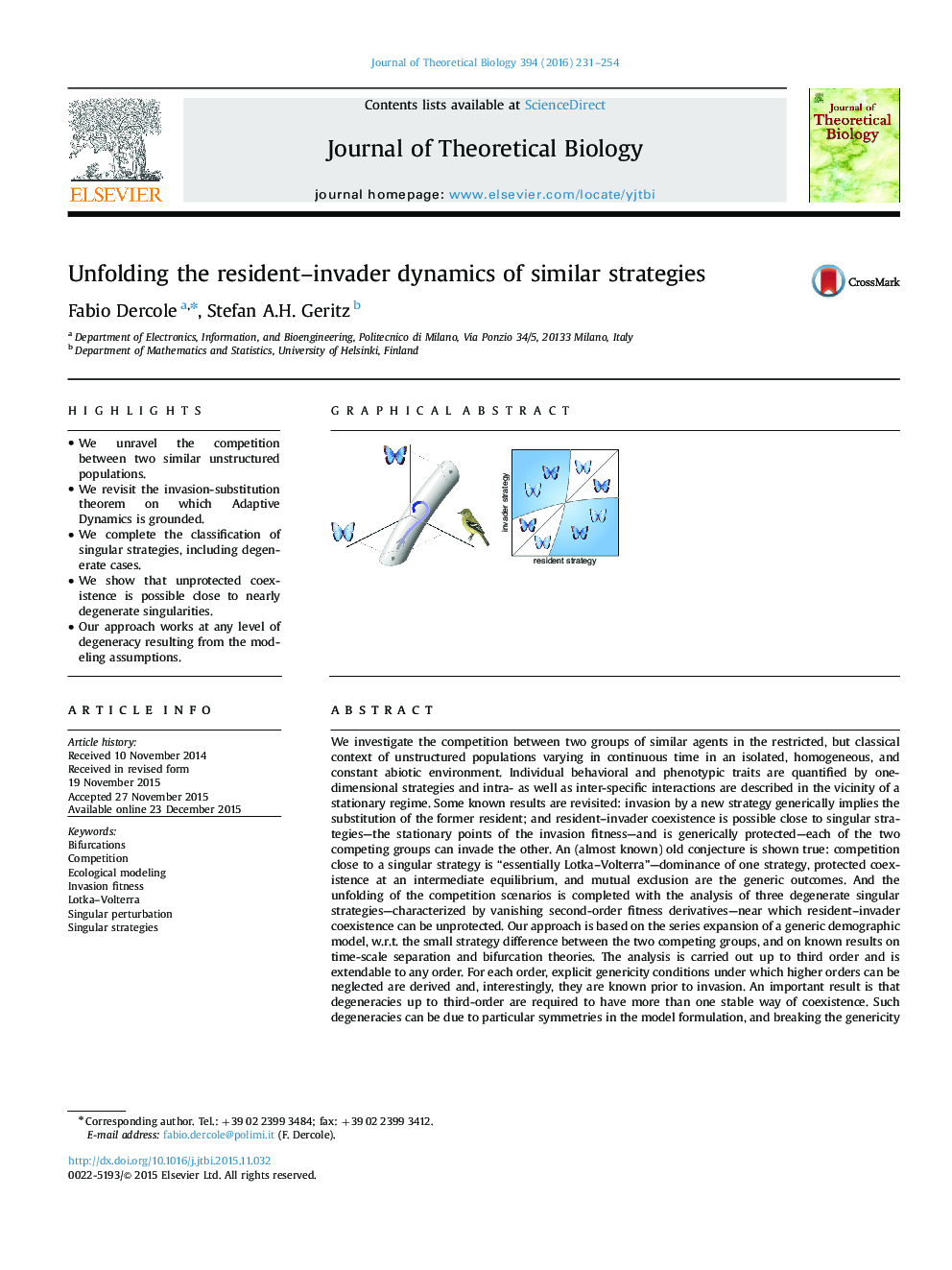| کد مقاله | کد نشریه | سال انتشار | مقاله انگلیسی | نسخه تمام متن |
|---|---|---|---|---|
| 4495900 | 1623816 | 2016 | 24 صفحه PDF | دانلود رایگان |
• We unravel the competition between two similar unstructured populations.
• We revisit the invasion-substitution theorem on which Adaptive Dynamics is grounded.
• We complete the classification of singular strategies, including degenerate cases.
• We show that unprotected coexistence is possible close to nearly degenerate singularities.
• Our approach works at any level of degeneracy resulting from the modeling assumptions.
We investigate the competition between two groups of similar agents in the restricted, but classical context of unstructured populations varying in continuous time in an isolated, homogeneous, and constant abiotic environment. Individual behavioral and phenotypic traits are quantified by one-dimensional strategies and intra- as well as inter-specific interactions are described in the vicinity of a stationary regime. Some known results are revisited: invasion by a new strategy generically implies the substitution of the former resident; and resident–invader coexistence is possible close to singular strategies—the stationary points of the invasion fitness—and is generically protected—each of the two competing groups can invade the other. An (almost known) old conjecture is shown true: competition close to a singular strategy is “essentially Lotka–Volterra”—dominance of one strategy, protected coexistence at an intermediate equilibrium, and mutual exclusion are the generic outcomes. And the unfolding of the competition scenarios is completed with the analysis of three degenerate singular strategies—characterized by vanishing second-order fitness derivatives—near which resident–invader coexistence can be unprotected. Our approach is based on the series expansion of a generic demographic model, w.r.t. the small strategy difference between the two competing groups, and on known results on time-scale separation and bifurcation theories. The analysis is carried out up to third order and is extendable to any order. For each order, explicit genericity conditions under which higher orders can be neglected are derived and, interestingly, they are known prior to invasion. An important result is that degeneracies up to third-order are required to have more than one stable way of coexistence. Such degeneracies can be due to particular symmetries in the model formulation, and breaking the genericity conditions provides a direct way to draw biological interpretations. The developed body of theory is exemplified on a model for the evolution of cannibalism and on Lotka–Volterra competition models.
Figure optionsDownload as PowerPoint slide
Journal: Journal of Theoretical Biology - Volume 394, 7 April 2016, Pages 231–254
